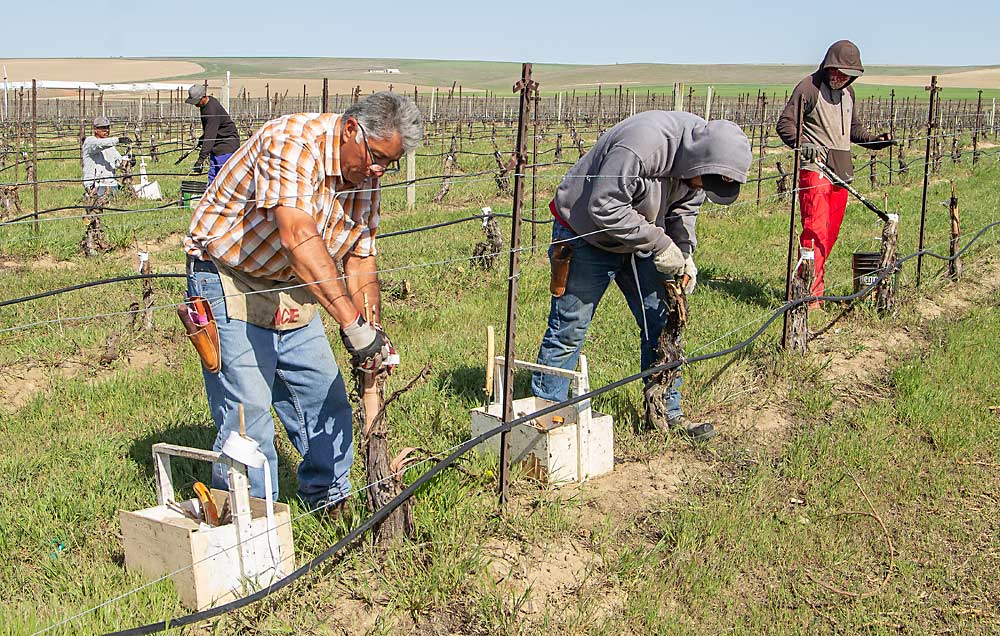
Raul Rodriguez, left, works to graft a grapevine in a block where a grower is switching varieties south of Kennewick, Washington, in April 2018.(Shannon Dininny/Good Fruit Grower)
In the distance, a chainsaw buzzes with each fresh cut of the grapevine. Following several rows behind the cutter, Raul Rodriguez and his team of workers slowly but steadily slice and marry grafts onto each vine.
For 15 years, Rodriguez has been traveling from California to Washington each season to graft in-demand grape varieties onto existing, established vineyards of varieties that might be falling out of favor with wineries.
Grafting is labor-intensive and requires growers to take steps to ensure they aren’t creating bigger problems in the vineyard — think viruses! — but it’s increasingly becoming a chosen option for those looking to switch things up quickly and more cheaply than replanting.
“When you plant, normally you don’t get anything until the third leaf, and it’s half a crop,” said Todd Newhouse of Upland Vineyard Winery in Outlook, Washington, who estimates he has hired Rodriguez and his crew every season since the grafter’s first work in Washington. “Grafting, it’s a year and half to get a crop, so you’re producing a year and a half sooner. You can’t overestimate the value in that.”
An analysis of the risks and benefits, by Trent Ball of Yakima Valley College, showed that field grafting can indeed halve the time out of production and significantly lower costs, with a payback period of just over three years for field grafting a vineyard compared with 4.7 years for replanting.
“This is a best-case scenario,” Ball said at the Washington Winegrowers Convention and Trade Show in Kennewick, Washington, in February 2018. “Assuming no untimely disease or freezes that have an impact on your production, grafting versus replanting shows major differences.”
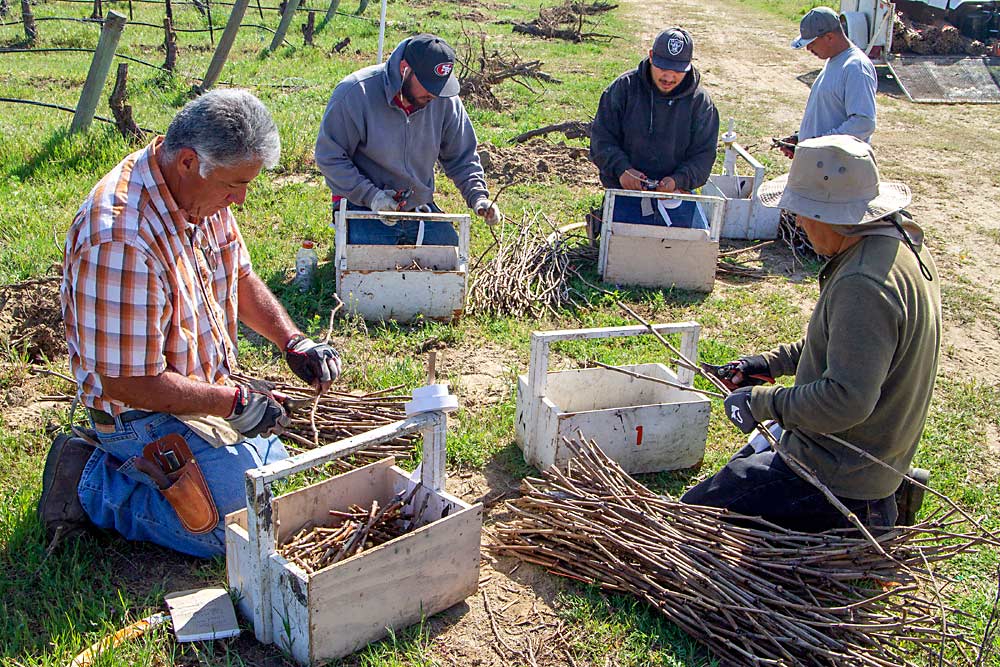
Rodriguez and his crew methodically cut graft wood into shorter segments to carry with them through the vineyard rows for grafting. (Shannon Dininny/Good Fruit Grower)
To graft or not to graft
Todd Chapman, vineyard manager for Coyote Canyon Winery in Prosser, Washington, reviews a list of grafting criteria to decide whether to graft or replant.
The list includes the economics behind it — do you have a contract for those grapes? — disease and virus status, site suitability and trellis design and vine density.
If a grower is unhappy with the vine density or a trellis is in bad shape, it might be a good time to make changes to those things and replant anyway, he said last year.
First-year management of a field graft involves monitoring and relieving vine pressure, managing and removing suckers, irrigating new growth, upping fertilization and considering cover crops to moderate irrigation and control some of the vigor.
His noted challenges for graft management: the timing of viticultural practices (“It’s hard to be efficient with your passes,” he said), spray applications, pruning and shoot thinning and overcropping.
“Also, plan early,” he said at last year’s Washington Winegrowers convention. “Make sure you look into labor availability. It’s hard to decide if you want to carry 20 extra people for a month or try to get through with your existing crew. The labor part of it is tricky.”
Rodriguez, too, noted the difficulty of labor. “It’s getting harder and harder to find workers, and that’s my biggest concern,” he said.
Fifteen years ago, a glut of Chardonnay and Merlot grapes had Washington growers looking to new varieties. Wineries were canceling contracts, and growers were getting nervous.
Newhouse said his father, Steve Newhouse, had been experimenting with grafting for a couple of years, unsuccessfully, with maybe 5 or 10 percent of the grafting vines taking off.
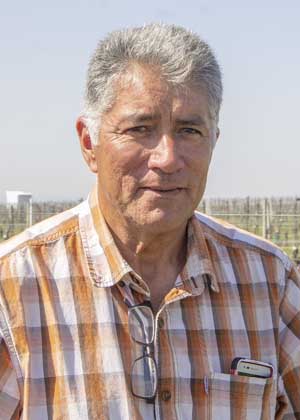
Raul Rodriguez
“So, dad found Raul,” he said. “We didn’t have anything we needed grafted, but we figured we’d find something for him to graft just to see if it would work.”
Unfortunately, it was already spring, and Newhouse didn’t have any wood. Rodriguez found clean wood in California, brought it to Washington and grafted one row of Chardonnay to Zinfandel. Of the 250 vines in the row, 248 took.
Newhouse and his dad couldn’t believe it.
“Later that same year, the ax came down on us and our contracts were up on Chardonnay and Merlot. The wineries didn’t want those varieties. So, we brought Raul up to graft over 75 acres to Pinot Gris,” he said. “I remember we were all just nervous, and everything just took beautifully.”
He estimates they’ve had Rodriguez graft at least an acre or two, if not 50 acres, every year since the first.
Originally from Oxnard, California, Rodriguez has worked in the fields most of his life, helping his dad pick tomatoes and strawberries when he was young before picking lettuce for a decade as a young man. His former father-in-law introduced him to grape grafting in 1989, and it’s grown to a family business that now includes his sons, brother and nephews.
Rodriguez and his crew generally average 400 acres of wine and, occasionally, table grapes over a season that lasts up to five months. He strives to finish his work in California in March, to travel to Washington in April, but the season in Washington keeps getting longer, thanks to demand. Last year, he wrapped up his last grafts around June 14.
Newhouse has learned the pros and cons. In the vineyard, the first year is pretty labor-intensive with training, and the vines must be watered differently.
“And you definitely have to do it a couple of times to figure out how to care for those vines and minimize your passes,” he said. “You graft four buds onto an established vine that’s used to pushing 50 buds. There’s a lot of energy in those vines and you have to learn how to harness it without things taking off and getting ridiculous on you.”
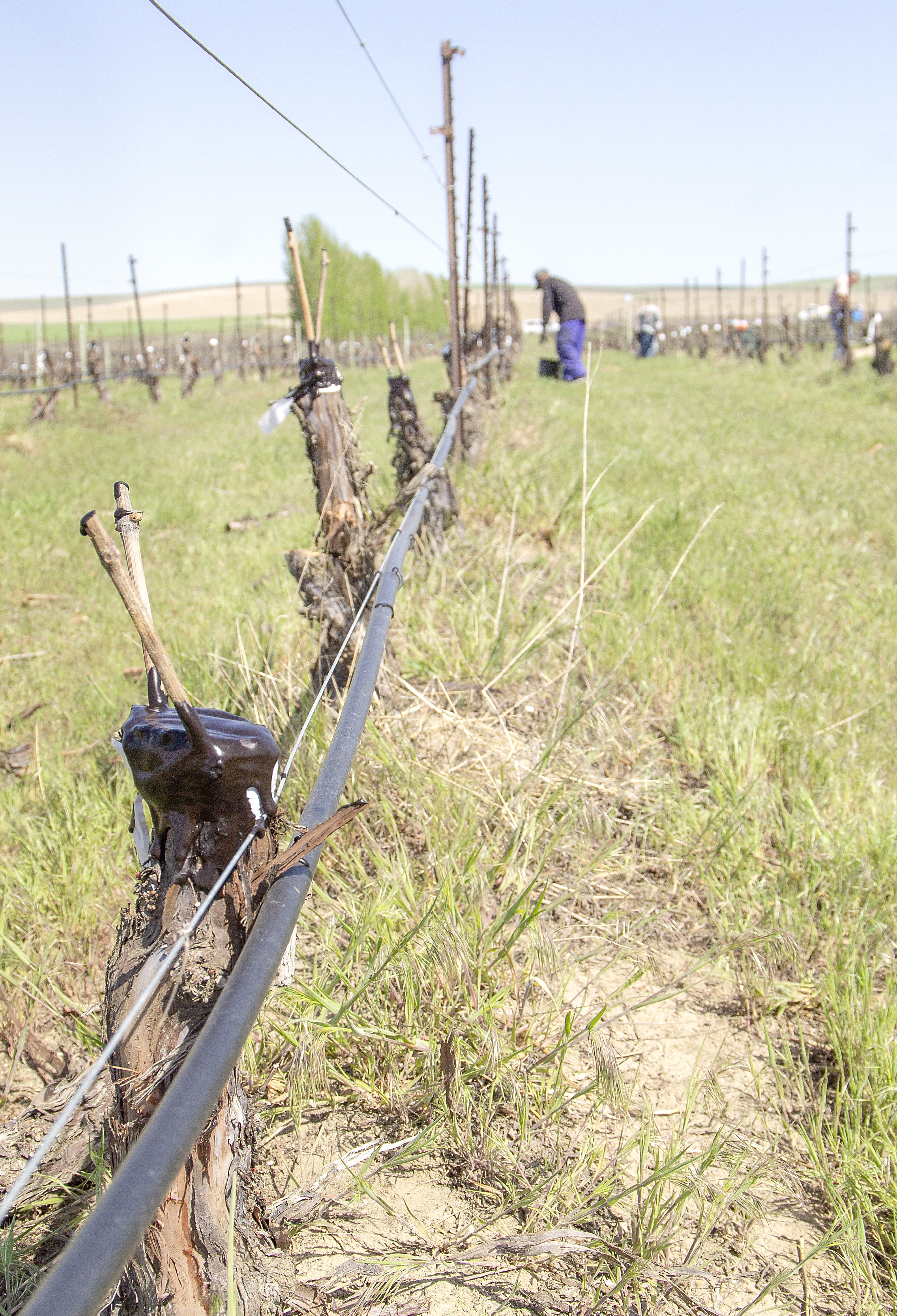
Workers graft a vineyard block where a grower is switching varieties south of Kennewick, Washington in April 2018. Rodriguez, based in California, has seen demand grow for his services in Washington in recent years, as more growers turn to grafting to turn over vineyards.(Shannon Dininny/Good Fruit Grower)
In addition, grafted vines have essentially been injured, making them susceptible to crown gall disease and viruses. “I’ve never seen crown gall take off in an older vineyard we’ve grafted, but it seems to happen a little more in the younger stuff we do,” he said.
And viruses pose another challenge. Fifteen years ago, Newhouse knew some blocks had leafroll and figured, “What’s the difference?” Then he saw how field grafting seemed to speed up the effects, he said. “Now we’re definitely conscious. If we know a block has intensive leafroll, we’ll rip it out.”
For his part, Rodriguez expects growers to have done their due diligence testing both the budwood and scion wood, and the budwood should be cut and placed in a plastic bag in cold storage. “You cannot just have them standing in the corner with water. You have to have them covered up, or they’ll dry out,” he said.
He prefers whip grafts, with two cuts and two sites for the graft to take off. He leaves at least two buds, because, as he put it, “The more the merrier. It has a better chance to take.”
Rodriguez covers the graft with stretchy tape, not electrical or duct tape, he noted, and covers with tree seal.
“It’s a lot of work. Even the process to prep the field is a lot, to cut the arms off. We ask them to cut everything back,” he said. “And when we’re done, they have to stay on top of training. When they’re a foot, 2-foot long, a grower should be training them already.”
Rodriguez considers a good take to be 90 percent or higher.
At 58, he’s not sure how many more years he has in the work, but said he enjoys it enough he may never quit. •
The grafting process:
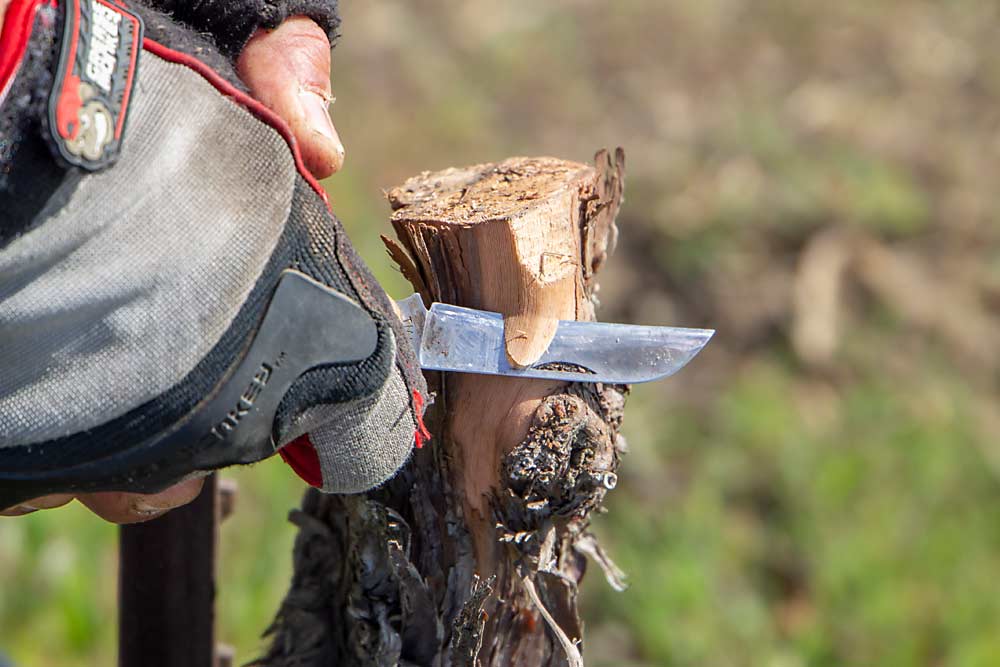
Step 1: Raul Rodriguez prepares a trunk for grafting at a vineyard south of Kennewick, Washington on April 26, 2018. A crew member first saws a clean cut off the top, then Rodriguez makes a side cut to remove the bark. (Shannon Dininny/Good Fruit Grower)
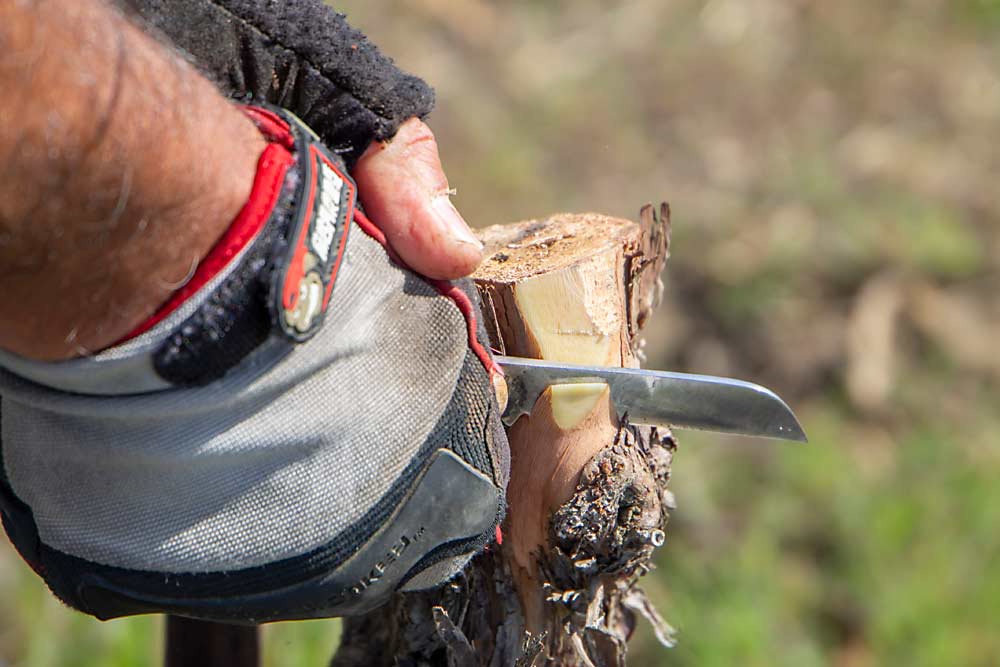
Step 2: Once the bark is removed, Rodriguez makes the first of two parallel cuts to prepare a pocket for the budwood graft. (Shannon Dininny/Good Fruit Grower)
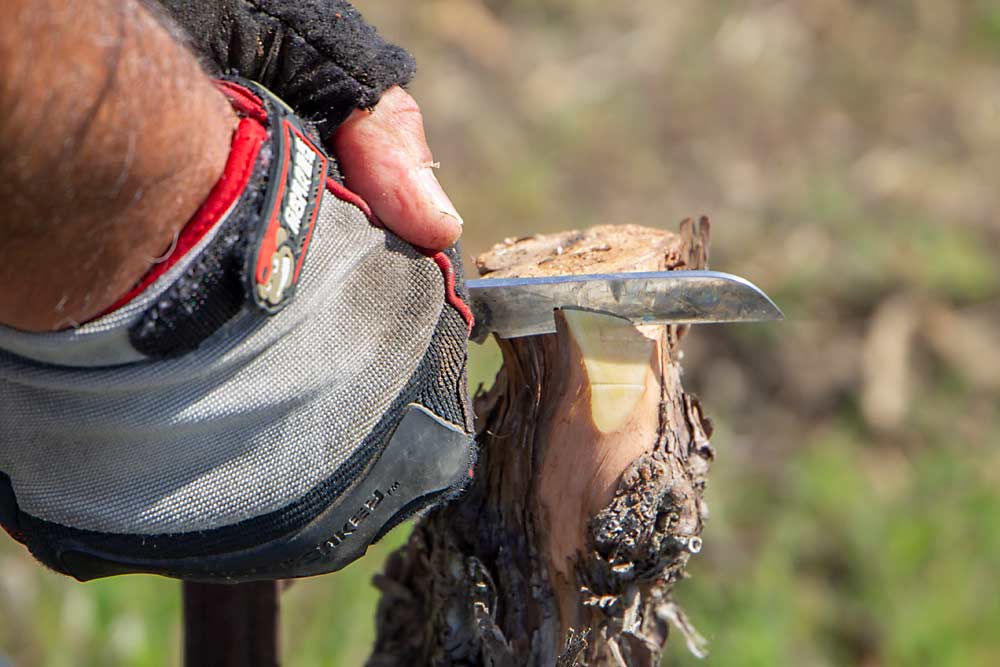
Step 3: Rodriguez makes the second of two parallel cuts to prepare a pocket for the budwood graft. (Shannon Dininny/Good Fruit Grower)
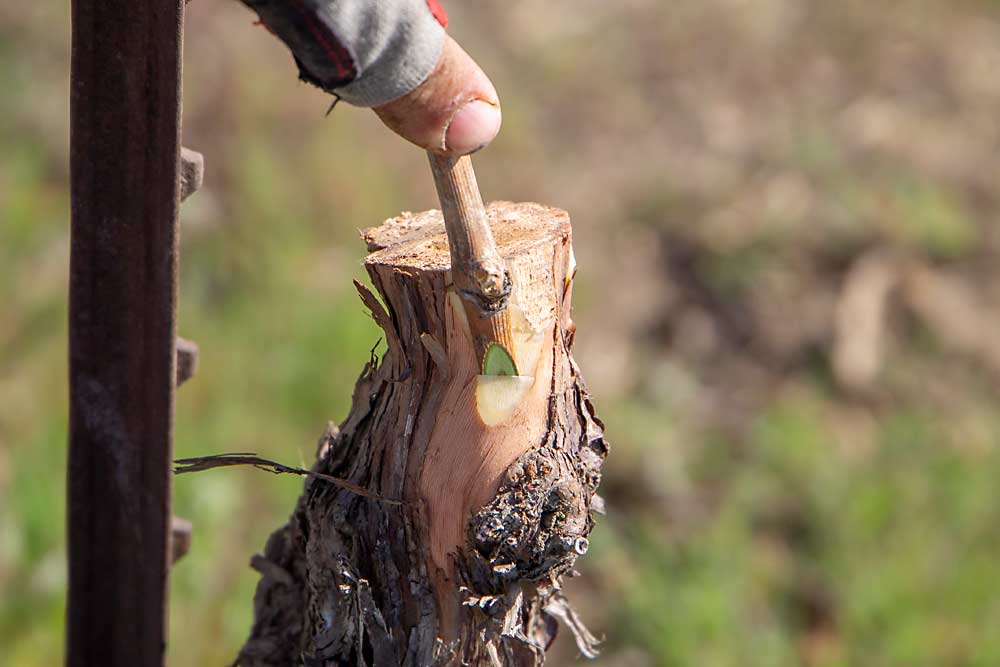
Step 4: Next, Rodriguez places the budwood into the pocket he created. (Shannon Dininny/Good Fruit Grower)
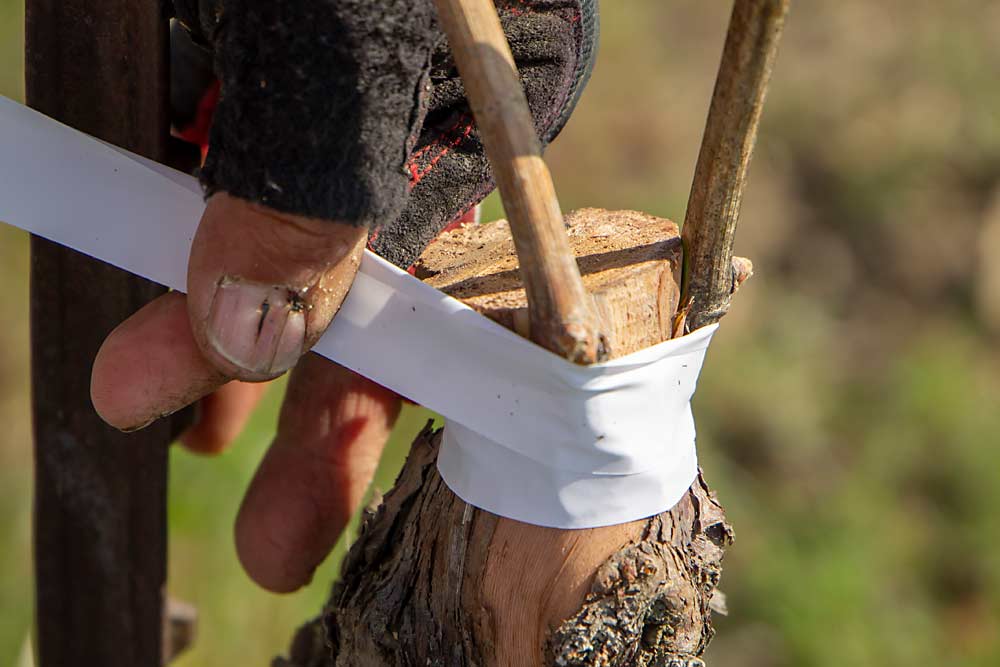
Step 5: Once the budwood is in place, Rodriguez, wraps the graft with tape. He leaves at least two buds, or as he puts it, “the more the merrier,” because the graft has a better chance to take. (Shannon Dininny/Good Fruit Grower)
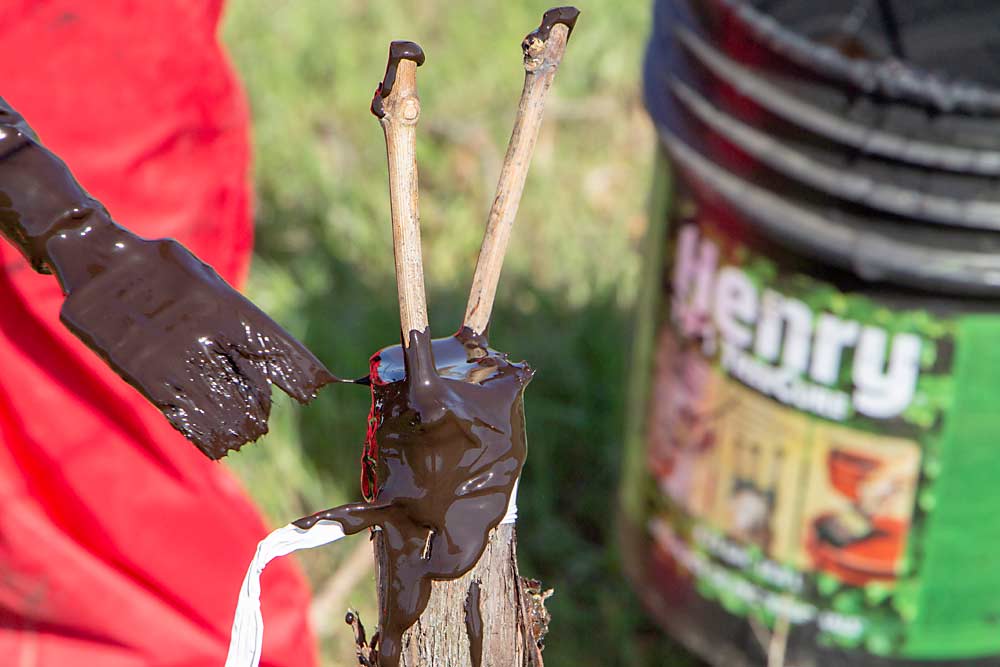
Step 6: Last, Rodriguez paints the graft to protect it. (Shannon Dininny/Good Fruit Grower)
—by Shannon Dininny
Related: Washington State University’s Naidu Rayapati shared some tips — as well as some of the risks — of field grafting in the June 2017 issue of Good Fruit Grower. The biggest recommendation: test, test, test for viruses!
Go to Rayapati: Risk of virus problems in field-grafted vineyards






Leave A Comment